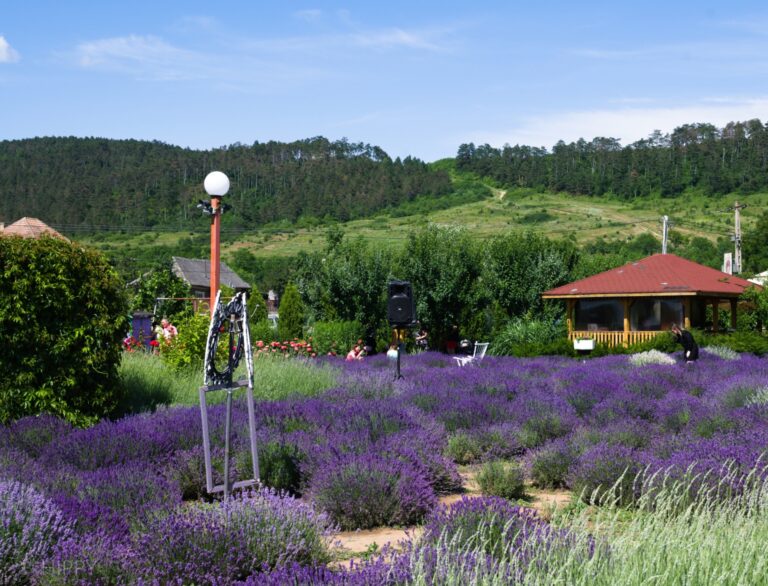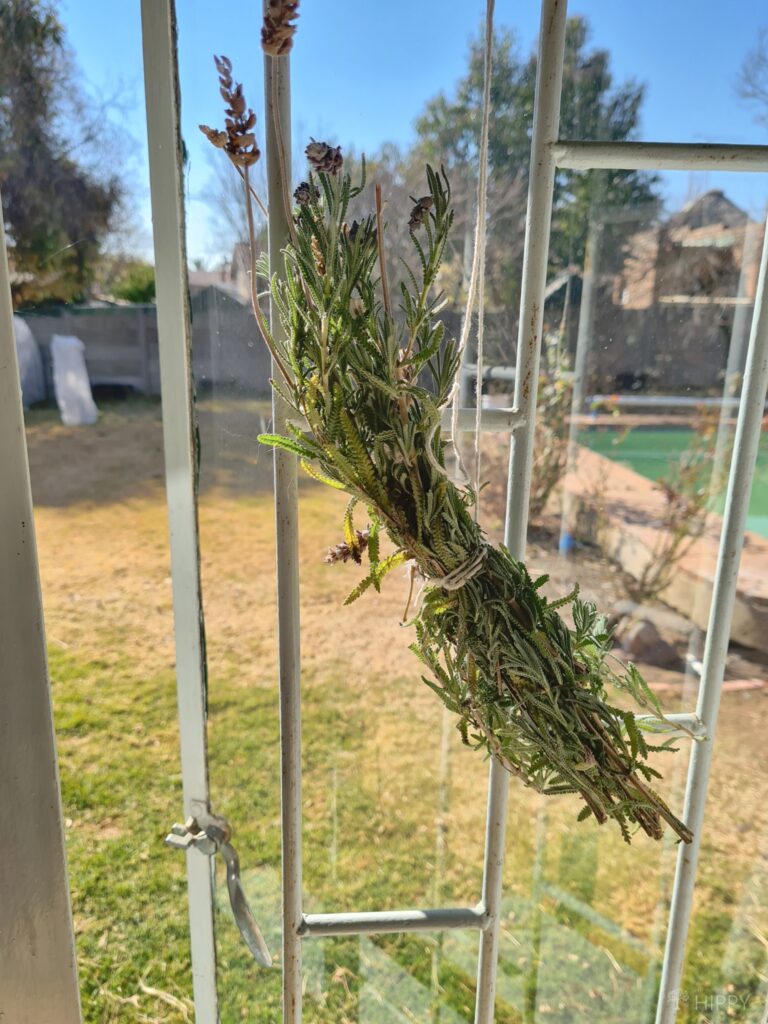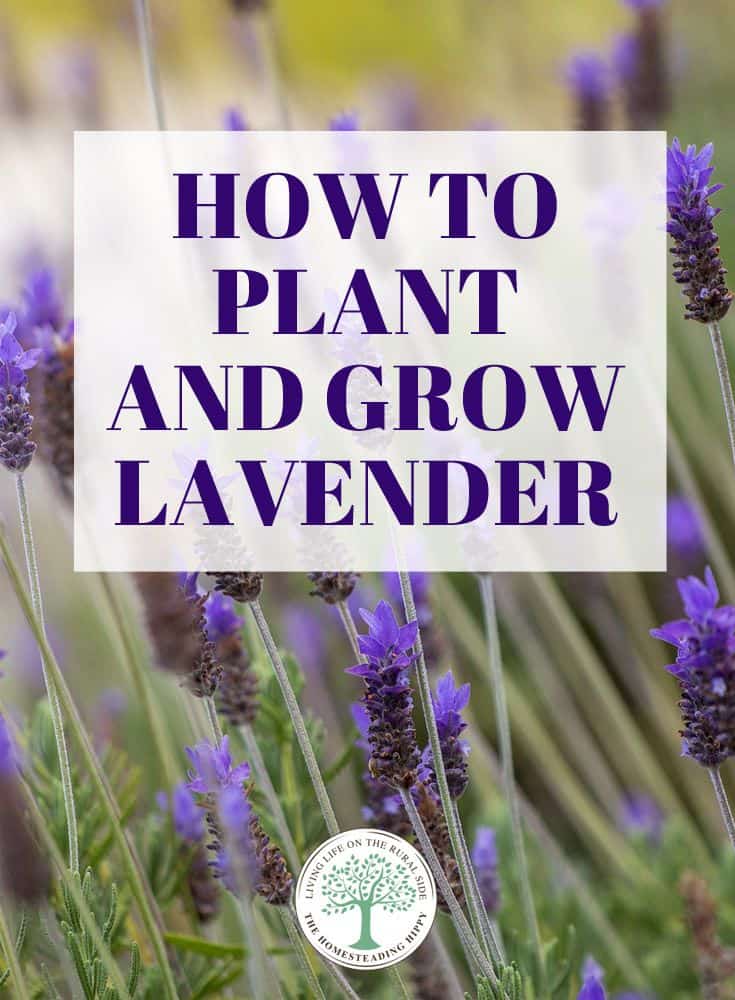Lavender is one of the most beloved backyard flowers, and for good reason. As an ornamental herb, it offers so many health and culinary benefits.
Plus, it’s easy to grow, it requires minimal care and adds a splash of color to any location. If you’re thinking about growing lavender, consider this helpful guide to assist you in getting started.

Why You Should Grow Lavender
Lavender can be grown in most climates, from those with harsh winters to those with more mild weather. As a companion plant, lavender helps to repel annoying pests like mosquitoes, flies, and moths.
You can distill it down into a repelling spray, or simply plant it in areas where you’d like to keep bugs away. It can even help combat fleas and ticks.
That being said, lavender is an excellent attractant for beneficial pollinators like butterflies and honeybees.
Because honeybees are in decline, growing lavender is a great way to help encourage growing populations of pollinators that can help your garden thrive.
This plant blooms throughout the summer months and can be pruned each fall to encourage new growth in the following year.
As a popular border or walkway plant, as well as an excellent indoor option, lavender should be at the top of your list of plants to grow this spring.
Benefits of Lavender
Lavender is commonly used in skin care items like bath salts and lotions because of its delightful scent, and it’s something you should always have on hand around the house.
Because it is antibacterial as well as antiseptic, it can be used in homemade laundry soap, cleaning wipes, or other solutions.
Varieties of Lavender
There are dozens of types of lavender to choose from when planting your garden. Some of the most popular are:
- Grosso
- Provence
- English
- French
Ideally, you should plant a wide variety of lavender to help scent your home and garden. This will provide you with a continual bloom of the richly-hued plant.
English lavender is one of the most popular types of lavender. Native to the Mediterranean region, English lavender is one of the best at growing in a cooler climate (hence the name).
It grows about two or three feet tall and forms mounds of plants. It is a popular choice for creating a low hedge as well as for use in culinary applications.
Within the English lavender variety, there are also several sub-categories. Hidcote English lavender has deep purple blossoms and grows shorter than other types, only reaching about a foot in height.
While it can be eaten, it is best used for edging garden beds or paths. Munstead English lavender, on the other hand, is more heat tolerant than other types of English lavender.
It can hold up to drier, more challenging conditions, as can other heat-tolerant species like Grosso lavender, Portuguese spike lavender, and broadleaf lavender.
Provence lavender is another common type of lavender, grown commercially in Provence, France. It has fragrant flowers on long stems and is ideal for crafting and decorating. It is flexible and can be shaped into wreaths and other decorations.
French lavender, on the other hand, is the best type of lavender for landscaping. While it can only be grown in Zones 8 to 11, it has a powerful scent and flowers continuously in areas that experience mild winters.
It is great for use in potpourri and other crafts requiring heavy fragrances and is less ideal for cooking.
Preparing Your Soil
Lavender prefers full sun and well-draining soil. Forming large bushes, it can be shaped into a hedge, so you will want to give it plenty of space to sprawl.
When preparing to plant lavender, keep in mind that the soil and location of your planting site are the absolute most important factors in the ultimate success of your lavender plant.
Ideally, your soil should be highly fertile and well-draining. It should contain high levels of oxygen to improve root growth and the likelihood of plant survival.
Consider adding coarse compost, mulch, or wood chips to the soil before planting to help increase the presence of beneficial microorganisms, and to make the soil more fertile and easier to work.
Something to note in planting lavender is that it cannot tolerate particularly salty soils. If you are amending your soil with an organic matter high in soluble salts, make sure you give it plenty of time to break down.
Structure is more important to lavender growth than nutrient content, so if the soil is nice and light, you may not even need to add any fertilizer.
After you’ve planted, you might consider adding a layer of mulch. Wood chips are best, as this will help add more structure to the soil.
The mulch will help reduce the destructive force of rain and wind, while also keeping the soil open and airy to allow oxygen to reach your lavender’s roots with ease. Avoid using landscape fabric or plastic when planting your lavender, as this can inhibit the flow of oxygen.
When you’re preparing to plant, wait for a dry day. Working the soil when it is wet will reduce the oxygen content of the soil, a factor to which lavender is particularly vulnerable.
While you don’t need any particular kind of soil (it doesn’t matter whether it’s silty or sandy, for example), you want to make sure it’s not too dense. If you have clay soil, consider adding an amendment to help it filter water, oxygen, and nutrients more effectively.
Planting Lavender
Lavender likes alkaline soil, with a pH of 6.5 or higher. When you’re ready to plant, create a mound that is about 18 to 24 inches in height. Add some round stone to help add structure to the base where you will be planting.
Again, no fertilizer is needed, but if you are looking to add more structure, you may add compost.
An equally mixed combination of bone meal, compost, and lime can help provide the nutrients necessary. Avoid the urge to over-fertilize, particularly with imbalanced synthetic fertilizers, as these can inhibit your lavender’s growth.
The best places to grow lavender are those that are hot, dry, and high in elevation to avoid water runoff.
Consider planting your lavender in places that have good southwestern exposure, or on the sides of slopes or banks. You can also plant lavender along pools, sidewalks, or walls for a nice pop of color. Your plants will need at least six hours of full sun.
You can cultivate lavender as soon as the soil has warmed to above-freezing conditions. Try to avoid planting in July, August, December, and January.
July and August tend to be much hotter, meaning you will need to water your lavender more frequently as it establishes its root systems. If you live in a warm area, you should avoid planting in these early winter months because the roots will be exposed to the air in too-cold temperatures.
Once you’ve mounded the soil in the area where you intend to plant, you are ready to get your lavender plants in the ground.
Add your mixture of lime, bone meal, and compost to the hole you have prepared. This will allow the soil to drain while improving the pH and small amount of nutrients necessary for your lavender’s success.
When planting, put your lavender plants about six feet from each other. This will allow for good circulation.
If you’re looking for a more dense, hedge-like appearance, you can place them slightly closer together. You can also plant lavender from seed, which is often easier as it eliminates the need to transplant and reduces the risk of harming the plant’s delicate roots.
Caring for Lavender Plants
Lavender prefers semi-arid conditions. If you live in a warmer area, consider using a light-colored, more reflective mulch. This will help retain moisture as needed while keeping the plant dried out.
Because lavender is a perennial herb, it will need to be covered with straw mulch until cold temperatures have passed.
It does not like moist conditions between seasons, so it’s important to remember how wet the planting area gets not just during the growing season, but also between seasons to ensure your lavender’s success.
During the winter, lavender needs to be cared for if you plan to keep it alive. If you have your lavender in a pot, bring it inside or place it on the warmer side of the house to harbor it from cold winter winds.
Consider wrapping it with a layer of burlap, and on nights below freezing, toss a blanket or tarp over it to protect it from frost.
You can prune the top of your lavender plant to ensure productivity between seasons. Only prune about once a year, and only remove about a third of the plant at the time.
You should keep about two or three inches of green foliage, and never cut into the woody part of the plant.
When you prune, wait until the coldest part of winter to ensure the plant is dormant. In many places, this is in February. Green foliage will likely appear in April, but this will vary depending on winter weather.
Lavender peaks in its third year, with each plant producing upwards of 1000 stems. Don’t be surprised if your production drops off slightly after this time.
Otherwise, are for your lavender plant just as you would any other perennial. You should water deeply, about an inch of rainfall per week.
They may require may water to get established, but once they are fully rooted, you can allow your lavender to dry out between waterings. For the first two years of growth, lavender should be watered every seven to ten days.
After your lavender has developed strong roots, it will be incredibly heat- and drought-tolerant. You shouldn’t need to water unless there is a prolonged drought, and overwatering can be detrimental, as it leads to fungal diseases like root rot. Instead of constantly fighting the urge to overwater, mulch your plants instead. Light-colored mulches are best, helping to reflect light, keep the plants adequately hydrated, and preventing diseases and other pests.
Lavender is actually quite sensitive to too much moisture. In many humid southern gardens, too much moisture can cause gray foliage and dying leaves. This can be combated by pruning the plant in February and improving the drainage around your plant. By pruning once a year and making sure your plants are mulched appropriately, you should be able to avoid any problems.
Growing Lavender Indoors
If your soil conditions or climate are just not conducive to growing lavender directly in the ground, you can also plant it in a raised bed or inside your home. Planting in a raised bed reduces the chance of erosion and runoff, allowing your plants to thrive without being hampered by too much water, too little water, or diseases like root rot.
If you are planting your lavender in a container or inside your home, remember that the temperature of the pot will always be roughly fifteen degrees colder than if it were planted in the garden. You may need to bring your outdoor containers inside or cover them when the temperatures drop. Lavender does grow best in an outdoor setting, where it has ample access to sunlight and warmth – remember, it’s native to the Mediterranean! However, it can be grown successfully indoors as long as you remember a few simple tips and tricks.
When planting in a container, make sure you look up the mature diameter of the lavender and choose an appropriately-sized pot. Lavender is tough to transplant, and you likely won’t need to divide it out as it gets larger. That being said, lavender has shallow roots, so while it needs to be at least eight to ten inches in diameter, it doesn’t need to be particularly tall. Instead of focusing on the height of your container, make sure you select one that is well-draining.
If you are growing lavender in a container, you will need to water it more frequently, particularly in the heat of the summer. In some cases, you may need to water once a day. Lavender requires significant amounts of sunlight, so if you’re growing it inside, be prepared to place it in a location that receives at least six to eight hours of sunlight per day – otherwise, it needs to be moved outdoors.
Harvesting Lavender
Each variety of lavender will be ready for harvest at different times, as it grows at different rates and has different harvest times depending on the zone you are in. However, most varieties can be harvested anytime between early May and late July. Lavender often blooms an additional time in the fall, and while this second onslaught of color typically isn’t as vivacious, you can definitely reap a second harvest from this bloom.
Lavender is ready to harvest when the bottom flowers are just opening. Cut the stems down to the foliage, gathering about a hundred stems together before hooking them together with a piece of twine or a rubber band.

You can turn them upside down or hang them from the ceiling to help them dry. Place the bundles in an out-of-the-way, dry location like an attic or closet, allowing them to dry for up to two weeks.
Storing Lavender
To keep fresh lavender in the house, treat it just as you would other cut flowers – except you don’t need to put it in water.
Water causes the stems to become soggy and rancid, and the flowers will fall off more quickly. Instead, just place the stems in a vase and enjoy. They will dry out on their own, meaning you can then use them for other purposes as well.
To preserve your lavender for long term use, place the flowers away from direct sunlight. The petals will dry to a grayish purple color and will fall off once dried. You can then use the petals for tea, culinary recipes, potpourri, and crafting.
Uses for Lavender
In addition to acting as a natural repellent and all-around garden booster, lavender has multiple culinary uses. It can be used in a variety of dessert recipes, such as those requiring the use of lavender-infused sugars, honeys, jams, or jellies.
You can even make lavender whipped cream or use it as a garnish. It is particularly tasty when combined with citrus flavors, providing delicious undertones that will really make your cooking pop.
Lavender is commonly used in lemonades, too, playing again off that nice citrusy pairing. Many people prefer to dry lavender, using it in teas or as a simple syrup in cocktail recipes.
No matter how you choose to use your lavender, growing just one or two plants can provide you with a wealth of culinary, medicinal, and decorative uses. This miracle herb is a great option for growing in a flowerbed or even as a semi-wild plant in your backyard.
Consider adding it to your backyard collection this spring for a pop of color and a lasting, pleasant aroma throughout the season.


Rebekah is a full-time homesteader. On her 22 acres, she raises chickens, sheep, and bees, not to mention she grows a wide variety of veggies. She has a huge greenhouse and does lots of DIY projects with her husband in her ever-growing homesteading endeavor. Learn more about Rebekah here.

This was very helpful. I know I can count on Pinterest for my “how to “
on anything. Thanks